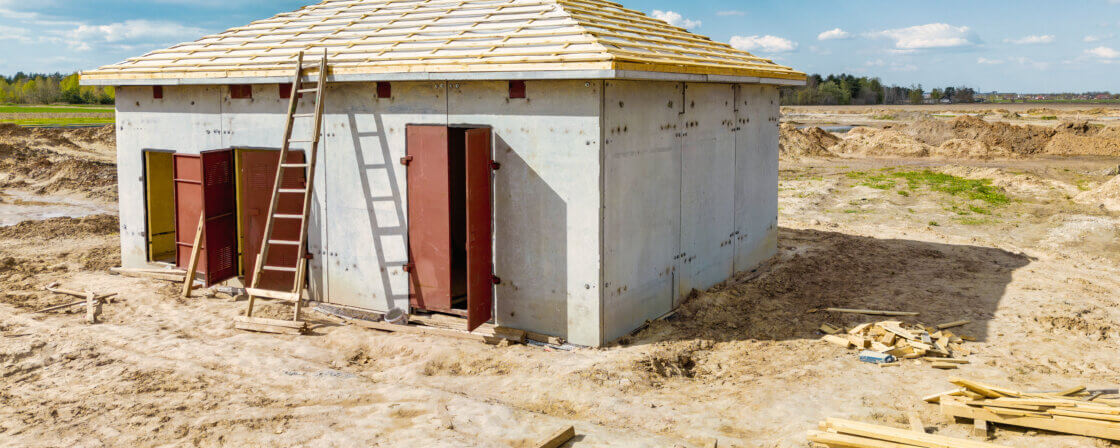What does alteration of a building before completion mean?
The term ‘pre-completion alteration’ refers to any alteration that has been made during the construction of the originally approved building, before the building has been approved and officially completed. This can be, for example, a change in the layout of rooms, a change in materials, a modification of structural elements or even a change in the function of a part of the building. Such changes may be initiated by the investor or the designer or may arise for technical reasons.
In practice, this is a very common phenomenon, as new facts often arise during construction that require a reassessment of the original design. However, the change is not always trivial and often entails the obligation to comply with legal procedures, obtain new permits and ensure compliance with other regulations.
Are you solving a similar problem?
Do you need advice on construction law?
If you need legal advice in the field of construction changes or construction law, do not hesitate to contact us. Our law firm provides a comprehensive service and will help you safely through the entire process.
More information
- When you order, you know what you will get and how much it will cost.
- We handle everything online or in person at one of our 6 offices.
- We handle 8 out of 10 requests within 2 working days.
- We have specialists for every field of law.
Legal framework for the alteration of the building
Changes to a building are primarily regulated by the Building Act, its implementing regulations and generally applicable rules in the field of building law. It is important to distinguish whether a change to a building constitutes a so-called substantial or non-substantial change.
- A substantial change to a building requires a new application for a building permit.
- A non-substantial change to a building is usually dealt with by way of a notification to the building authority or can be carried out without further approval procedures.
Substantial alterations are again defined by the Building Act and include interventions that change the character of the building, its use, basic parameters, etc.
Furthermore, general legal norms such as the Civil Code, which regulates contractual relations between the investor and the contractor, designer or other persons involved in the construction, must also be respected.
What are the types of changes to the construction
We distinguish between construction changes according to their nature and their impact on the original project:
- Non-substantial changes are, for example, minor modifications that do not change the basic parameters of the building, do not cause an increase in the land take or a change in use. These changes can often be implemented during construction by notification, or sometimes even without the need for an official procedure.
- Substantial alterations are, for example, an extension of the building, a change of use (e.g. from residential to commercial), a change in the structure’s statics or a change in significant technical parameters. These changes require a new building permit.
Each change must be documented and supported by updated project documentation, which is the basis for the approval procedure at the building authority.
Tip for article
Tip: Are you struggling with a temporary building in your area, or thinking about its location yourself? Learn when a building permit is needed, what happens after the temporary period expires, and what to do if such a structure violates the law.
How to proceed with a change to a building before completion
A construction change usually starts with an initiative from the investor or the designer. First, it is necessary to assess whether the change is substantial or non-substantial. This step is crucial as it determines the next course of action.
If it is a non-substantial change: the investor or builder submits a notification of the change to the building with the relevant documentation to the competent building authority. The building authority usually has 30 days to make any comments or objections. If it does not intervene, the change can be implemented. A non-substantial change does not alter the building permit or the building permit.
If it is a substantial change: A new building permit application must be submitted based on an updated design. The building authority will initiate the procedure, in which it may also request the opinion of the authorities concerned (hygiene, conservation, environmental protection, etc.). Once the new building permit has been issued, the change can be implemented. A substantial change before completion may also mean an increase in construction time and costs.
Legal implications and risks of the change of construction
Failure to comply with legal obligations when altering a building can have serious legal consequences, which can manifest themselves on several levels. If an investor or builder violates the Building Act, he or she may face fines, administrative sanctions and, in extreme cases, the building authority may order the removal of a part of the building that was illegally constructed. In addition, a change to a building that is not properly approved cannot be included in the approval decision, which in effect prevents the legal use of the entire building.
In cases where the change is made without the contractor’s consent, contractual relations may be disrupted and claims for damages may arise. We cannot ignore the risks in relation to neighbouring properties and third parties – for example, if the alteration worsens neighbourly relations, increases noise pollution or restricts views. For these reasons, it is essential that you always approach changes with legal caution and ideally consult with a construction law specialist at the preparatory stage.
There are a number of cases in Czech case law relating to changes to buildings, particularly where the change has been implemented without proper permission or notification of the change within the building documentation, which is subject to the authority’s assessment. The courts often assess whether the change was substantial and whether the builder complied with the procedural requirements.
Tip for article
Tip: What are all the permits and stamps you will need to get when you want to start building a greenfield house? Find out in our article.
Recommendations for investors and builders
Plan ahead for changes: Changes to a building plan are not uncommon, but the earlier you take them into account, the fewer problems they can cause. We recommend that you consult with the project engineer at the preliminary stage of the project about any possible changes. In addition to the technical aspects, you also need to address the legal aspects – any change can affect construction procedures, deadlines or contractual relationships. A lawyer can help you to identify the legal implications of proposed modifications at an early stage.
Update the documentation: any change to the building must be properly recorded in the documentation. This applies not only to changes in technical design, but also to changes in the appearance of the building, its location or connection to infrastructure. Without adequate documentation, you risk that the building will not be approved at the time of approval or that the authority will order its modification.
Follow formal procedures: not all changes require a new building permit, but some do. It is important to distinguish between a minor change, which can be notified, and a substantial change to the building, which requires a new application for a building permit or a change to the building before completion.
Communicate with the authorities: avoid misunderstandings by proactively communicating with the building authority. Officials can provide you with useful information on what steps you need to take and what documents you need to provide.
Deal with contractual relations: If changes are made during the construction process, the construction contract must be amended. Adding to the scope of work, changing deadlines or increasing the price should all be contractually addressed. This will prevent disputes with the contractor and give you legal certainty that both parties are clear about what is to be performed.
Changing the construction before completion is a common but legally challenging part of the construction process. Properly assessing the type of change, following the appropriate procedures and careful documentation are key to successfully completing the construction without legal complications. Investors and builders alike should always consider the potential risks and spare no expense on professional legal support, which can greatly facilitate the entire process and avoid subsequent problems.
Summary
Alteration of a building before completion is a common occurrence in construction when the original design needs to be modified for technical, economic or other reasons. Such a change, made before the building is approved, can be minor (e.g. minor modifications without affecting the character of the building) or substantial (e.g. change of structure, use or size), each requiring a different legal procedure – from a simple notification to a new building permit. The process is regulated by the Building Act, the Civil Code and other regulations, and it is necessary to keep the project documentation up to date, communicate with the building authority and adjust contractual relations. Failure to comply with the rules can lead to administrative sanctions, invalidation of the approval, or even an obligation to remove part of the building. Therefore, early legal consultation, thorough planning and compliance with all formal procedures are recommended to ensure that the construction project is successfully completed without legal risks.




